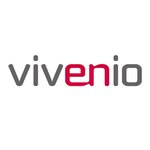Description

Airmeet

Convergence
Comprehensive Overview: Airmeet vs Convergence
Airmeet and Convergence are platforms that cater to virtual events, but they serve distinct purposes and target different markets. Here is a comprehensive overview of each:
Airmeet
a) Primary Functions and Target Market:
- Primary Functions: Airmeet is designed for hosting virtual events such as conferences, webinars, workshops, and networking sessions. It offers interactive features like virtual tables for networking, real-time messaging, live polls, Q&A, and a stage for presentations. The platform supports both small and large-scale events and provides tools for event analytics and engagement tracking.
- Target Market: Airmeet primarily targets businesses, educational institutions, and event organizers looking to host professional virtual events. It aims at industries like corporate, education, and associations that frequently hold large-scale events requiring networking and engagement features.
b) Market Share and User Base:
- Airmeet has gained significant traction due to its robust feature set and emphasis on networking. While specific market share data might not be publicly available, Airmeet is considered a strong competitor in the virtual events industry alongside platforms like Zoom, Hopin, and Remo. Its user base includes a mix of small to large enterprises across various sectors.
c) Key Differentiating Factors:
- Networking Capabilities: Airmeet stands out for its focus on networking, providing features like virtual tables and networking lounges to facilitate meaningful connections between participants.
- Customization: The platform offers extensive customization options for branding and event setup, allowing hosts to tailor the experience to their specific needs.
- User Experience: Airmeet is praised for its user-friendly interface that makes it easy for both hosts and attendees to navigate and interact within the event space.
Convergence
a) Primary Functions and Target Market:
- Primary Functions: Convergence focuses on virtual reality and immersive experience technologies. It is designed to create highly interactive 3D virtual events, exhibitions, and trade shows. Convergence provides tools for virtual booths, 3D spaces, and integrates with VR headsets to enhance the immersive experience.
- Target Market: Convergence targets industries that benefit from high interactivity and visual presentation, such as technology, gaming, real estate, and entertainment. It is particularly appealing to businesses looking to offer their audience an innovative and immersive event experience.
b) Market Share and User Base:
- Convergence operates in a niche market compared to broader virtual meeting platforms. Its market share is smaller but significant within the VR events and experiential marketing sectors. The user base often includes tech-savvy companies and industries where VR adoption is more prevalent.
c) Key Differentiating Factors:
- Immersive Experience: Convergence's ability to deliver fully immersive 3D and VR experiences sets it apart from traditional virtual event platforms. This technology is appealing for events that benefit from an enhanced sensory experience.
- Innovation and Technology: The platform is at the cutting edge of integrating VR into events, offering an innovative approach to virtual engagement.
- Visual and Spatial Interactivity: Convergence provides a visually dynamic platform that allows users to explore spaces in a more engaging and interactive manner, which is ideal for showcasing products or services in a virtual environment.
Conclusion
Airmeet and Convergence cater to the virtual event market but serve different needs based on their technological capabilities and target audiences. Airmeet is more versatile for general virtual events with a strong emphasis on networking, while Convergence is tailored towards highly immersive and interactive experiences using VR technology. Their distinct features make them suitable for different types of users and industries, with Airmeet focusing on broader professional events and Convergence targeting niches that value immersive technology.
Contact Info

Year founded :
2019
+1 541-745-8254
Not Available
United States
http://www.linkedin.com/company/airmeetcom

Year founded :
1988
+33 5 57 87 02 05
Not Available
France
http://www.linkedin.com/company/convergence--agence-conseil-en-communication
Feature Similarity Breakdown: Airmeet, Convergence
As of my most recent data, Airmeet and Convergence are platforms designed to facilitate virtual and hybrid events. While I don't have specific details on a product named "Convergence" as it may refer to multiple potential platforms or a newer, less-publicly detailed platform, I can provide a general comparison based on known virtual event platforms that might align with Convergence.
a) Core Features in Common:
-
Virtual Stages and Sessions: Both platforms likely offer a feature to host live sessions, webinars, or keynote speeches.
-
Networking Tools: These platforms probably focus on fostering attendee interaction with features like chat, Q&A, and one-on-one meeting scheduling.
-
Exhibitor or Sponsor Booths: This is a common feature for virtual event platforms, allowing exhibitors to showcase their products or services.
-
Analytics and Reporting: To provide value, both platforms might include tools to gather data on attendee engagement, session popularity, etc.
-
Multi-format Support: Support for different content types such as video, audio, and document sharing during events.
-
Customization and Branding: They likely allow for some degree of customization to align event design with the event host’s brand.
b) Comparison of User Interfaces:
-
Simplicity versus Complexity: Airmeet is known for its user-friendly and intuitive design, making it accessible to non-technical users. If Convergence follows the trend of contemporary platforms, it also aims for simplicity but might differ in layout, design, or user experience specifics.
-
Visual Aesthetics: Airmeet’s interface is centered around a modern and sleek aesthetic with clear navigation paths, similar to other top-tier event platforms. Convergence’s interface might compete more closely or differentiate with unique stylistic choices.
-
Interactive Elements: Airmeet includes interactive formats such as virtual tables for networking, and Convergence might provide similar or novel interactive interfaces.
c) Unique Features:
-
Airmeet:
-
Social Lounge: This feature is unique in allowing participants to join virtual tables for a more personal networking experience, simulating the physical interactions in events.
-
Event Management: Airmeet may excel with integrated tools for event hosts to easily manage and oversee logistics within the platform.
-
-
Convergence: Assuming it mimics other recent offerings:
-
Innovative Engagement Tools: Convergence could offer unique engagement mechanisms, such as AI-driven recommendations for networking connections or themed virtual environments.
-
Integrated Experiences: It may offer stronger integrations with other business tools (CRM, marketing platforms) for holistic event management and post-event follow-through.
-
In summary, while both platforms share a baseline of virtual event hosting features, unique attributes like Airmeet's Social Lounge or potential innovative features in Convergence could set one apart. Verifying these comparisons would require more detailed research into Convergence's specific offerings, which might include newer or lesser-publicized features.
Features

Not Available

Not Available
Best Fit Use Cases: Airmeet, Convergence
Airmeet and Convergence are platforms designed to cater to different needs in the virtual and hybrid event space, each excelling in specific use cases:
Airmeet
a) Best Fit Use Cases:
- Conferences and Summits: Airmeet is ideal for hosting large-scale conferences and summits which require robust networking features, such as virtual booths, exhibitor spaces, and interactive sessions.
- Webinars and Workshops: It's perfect for businesses that regularly host webinars and interactive workshops, thanks to its seamless integration of polls, Q&A sessions, and real-time analytics.
- Community Engagement Events: Organizations looking to foster community engagement through meetups or panel discussions find Airmeet’s platform conducive for creating immersive experiences.
d) Industry Verticals and Company Sizes:
- Event Management and Marketing Companies: These companies can benefit from Airmeet’s scalable solutions for diverse events, enabling them to cater to various clients.
- Educational Institutions: Universities and educational bodies can use Airmeet to conduct virtual classrooms and workshops, ensuring interactive and engaging learning environments.
- Mid to Large Enterprises: Enterprises that need to host corporate events, town halls, or retreats can leverage Airmeet’s capabilities for large audience management.
Convergence
b) Preferred Use Cases:
Convergence typically leans towards use cases where real-time interactions and data synchronization are critical. It might be better suited for situations like:
- Collaborative Development Environments: Specifically for teams that need real-time collaboration, such as software development, game development, or any project requiring version control and live editing.
- Design and Engineering Projects: Projects involving remote teams working on shared designs or engineering models can benefit from Convergence’s capabilities in maintaining synchronized workflows.
d) Industry Verticals and Company Sizes:
- Tech and Development Firms: Companies involved in software and product development can capitalize on Convergence’s real-time collaboration features to enhance productivity and team synergy.
- Creative Agencies: Agencies working on digital content and media can leverage collaborative capabilities to facilitate brainstorming and content creation processes.
- Small to Medium-Sized Teams: While also beneficial for larger teams, Convergence shines particularly with small to medium teams that require tight integration and coordination without the overhead of managing large-scale event features.
In summary, Airmeet is the go-to choice for hosting virtual events with a focus on attendee engagement, networking, and interaction, ideal for large enterprises and education sectors. Convergence, on the other hand, excels in scenarios requiring real-time collaboration and synchronization, making it a strong candidate for tech-centric and development-driven use cases.
Pricing

Pricing Not Available

Pricing Not Available
Metrics History
Metrics History
Comparing teamSize across companies
Conclusion & Final Verdict: Airmeet vs Convergence
To determine which product offers the best overall value between Airmeet and Convergence, it's important to evaluate their features, usability, customer support, and pricing. Here’s a comprehensive analysis and conclusion:
Final Verdict on Airmeet vs. Convergence:
a) Best Overall Value: Airmeet generally offers the best overall value, especially for organizations that prioritize interactive audience engagement and versatile event options. Its robust feature set caters to diverse event types, making it a versatile choice for many users.
b) Pros and Cons of Each Product:
Airmeet:
-
Pros:
- Interactive Features: Airmeet is highly regarded for its interactive features such as virtual tables, networking lounges, and audience engagement tools like polls and Q&A sessions.
- User-Friendly Interface: Its intuitive design and ease of navigation make it accessible for both organizers and participants.
- Versatility: Suitable for various event formats including webinars, conferences, and workshops.
- Broad Integrations: Seamless integration with various CRM and marketing tools enhances its utility.
-
Cons:
- Learning Curve: Despite its user-friendly interface, the extensive range of features can pose a learning curve for new users.
- Pricing: Can be on the higher side for small businesses or individual users, particularly for advanced features and large-scale events.
Convergence:
-
Pros:
- Scalability: Known for its ability to handle large-scale events efficiently, making it a strong choice for enterprise-level operations.
- Customization: Offers a high degree of customization to tailor the event experience to specific needs.
- Stable Performance: Provides reliable and stable performance even with extensive user participation.
-
Cons:
- Complex Setup: The setup process can be complex, requiring more time and technical know-how.
- Less Interactive: Compared to Airmeet, it might lack some interactive engagement features, which could limit audience participation.
c) Recommendations for Users:
-
For Interactive and Versatile Event Needs: Users who prioritize interactive sessions and diverse event formats should lean towards Airmeet. It's ideal for organizations that want to foster more networking and engagement among participants.
-
For Large-Scale, Customized Events: Convergence is recommended for enterprises requiring highly customizable solutions for large events where stability and scalability are paramount. It’s particularly suitable for users who have the technical resources to manage a detailed setup.
In conclusion, selecting between Airmeet and Convergence should align with your specific event requirements, budget, and desired audience experience. If interaction and diverse format handling are critical, Airmeet stands out; however, if scalability and customization are more crucial, Convergence offers the necessary infrastructure.
Add to compare
Add similar companies




